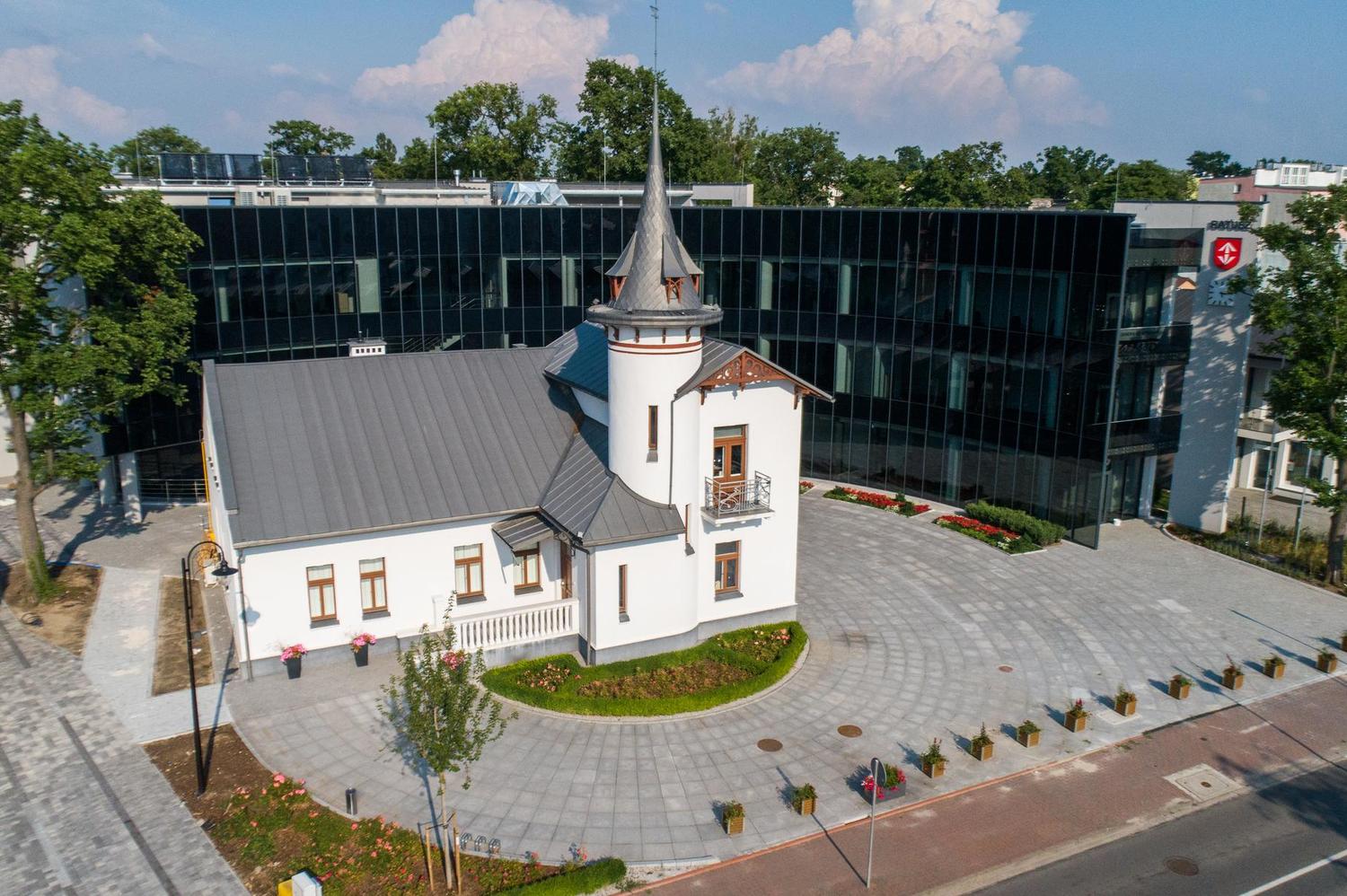Monuments and tourism
The most valuable archaeological object in the commune is the early Medieval Slavic settlement located in the village of Chlebnia, colloquially called "Swedish Mountains". Grodzisko is a remnant of a defensive settlement existing here in the 11th and 12th centuries, which was most probably a knights' residence. Surroundings of the stronghold arose subgroups. In the place of one of them, the village developed, and then the city of Grodzisk.
In the city there are numerous historical objects worth visiting. The most interesting of them are:
- Parish church, p.w. St. Anny (Plac King Zygmunt the Old) - funded by Wojciech Mokronoski in 1687 Brick, built in an eclectic style. Inside, renaissance and baroque furnishings.
- Chapel of St. St. Krzyża (next to the church) - built in 1713 as a votive offering after the end of the cholera epidemic.
- Dwór Skarbków (Parkowa 1 street) - built in the second half of the eighteenth century in the Baroque-Classicist style. The family seat of subsequent owners of Grodzisk. Inside, there are unique polychromes by Jan Bogumił Plersch from 1782
- Jewish Cemetery (Żydowska St.) - founded in 1780 There are 277 historic tombstones on its present site. Until 1941, it was the burial place of Jews living in Grodzisk and its vicinity.
- The building of the former Hydrotherapy Institute of Dr. Bojasiński (J. Kilińskiego 12 St.) - was established in 1884 Currently, it is the seat of many social organizations and Primary School No. 1.
- Villa "Foksal" (26 W. Bartniak St.) - built by the Mokronoski family in 1845-46 for a detached house with a distinctive locomotive shape.
- Willa "Kaprys" (Okólna 1 St.) - comes from 1886 In its surroundings there is an old carriage house and a historic park with a pond and sculptures.
- Villa "Radogoszcz" (street H. Sienkiewicza 31) - built in the end of the 19th century Currently the seat of many associations and cultural organizations. The building also houses a gallery where the Culture Center organizes around 6 different exhibitions a year.
- Villa "Kniaziew" (Suwalska 15 street) - built in 1911 for the summer residence of General Eugeniusz Dmitriewicz Kniazev - engineer of war fortifications of Russian troops stationed in Warsaw .
 Significant significance for the city landscape has the historic urban layout of the center - buildings at Pl. Wolności, Pl. King Zygmunt Stary and the northern part of buildings ul. Sienkiewicz. In the years 1993-1994, the main street of the city was completely modernized from the municipal budget, excluding it from road traffic. Along along ul. On 11 November, an elegant, representative city passage was created, varied with many green squares, benches and decorative lighting. In recent years, along the Grodzisk pedestrian zone, private investors have built many new tenements that have significantly improved the image of the city.
Significant significance for the city landscape has the historic urban layout of the center - buildings at Pl. Wolności, Pl. King Zygmunt Stary and the northern part of buildings ul. Sienkiewicz. In the years 1993-1994, the main street of the city was completely modernized from the municipal budget, excluding it from road traffic. Along along ul. On 11 November, an elegant, representative city passage was created, varied with many green squares, benches and decorative lighting. In recent years, along the Grodzisk pedestrian zone, private investors have built many new tenements that have significantly improved the image of the city.
The architecture of the PKP railway station built in the 1920s is also interesting. In 1995, on the occasion of the 150th anniversary of the opening of the Warsaw-Vienna Iron Road, it was thoroughly renovated. It is one of the most beautiful examples of applying manor style in public buildings.
The cultural landscape of the commune's rural areas preserved to this day was shaped at the end of the 19th and the beginning of the 20th centuries. The most valuable group of monumental objects are court complexes - buildings along with the surrounding parks. Some of them are now privately owned, thanks to which they have been restored, such as the palace in Opypów dating from 1900, or manors in Adamowiźnie.
However, the most valuable sacred monument of the commune is the wooden church of the pov Transfiguration of the Lord in Żukowo built in the years 1676-1677 and renovated twice in the 19th and 20th centuries. The interior decoration comes from the Baroque period (XVII / XVIII). Next to the church there is a wooden belfry from the 17th century.
No less important are also natural values - historic parks, picturesque winding rivers and numerous ponds and forest charms - wildlife refuge.
Just behind the southern border of the commune - along the Katowice route there are two more hotels and agritourism lodgings.
In the neighboring commune, in the village of Grzymek, on the Pisia Tuczna River, an artificial lagoon was made available for bathing and relaxing - a place of frequent weekend trips by the inhabitants of Grodzisko. A holiday center and holiday home settlements are located nearby.
The blue tourist trail "Śladami Chełmońskiego" runs through the southern part of the commune. 4 km south of the city, in the village of Adamowizna on the route there are old mill ponds surrounded by small hills covered with forest. This charming corner for decades has been called "Chełmońszczyzna" - this name comes from the owners of a villa standing by the pond, built in the style of Polish manor houses, in which Dr. Adam Chełmoński, a younger brother of a well-known painter, lived.
Things to recommend:
- cycling and hiking tours - cycling routes map

- fishing in numerous water bodies
- mushroom picking in nearby forests
- horse rides on horseback or carriage
- for amateurs of strong sensations - scenic glider flights
- visit the Folk Instruments Gallery - the only gallery of this type in Europe.


